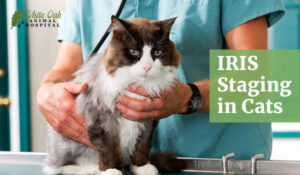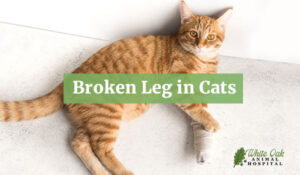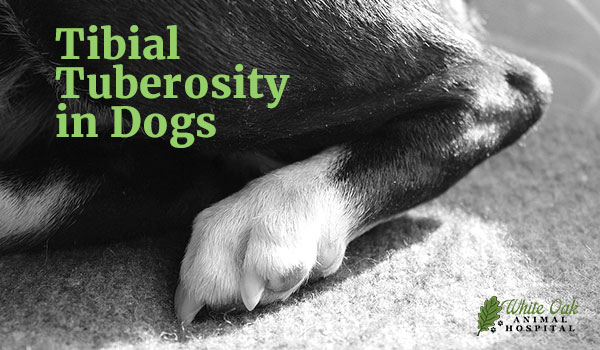 Tibial tuberosity in dogs is a condition that all dog owners should be familiar with, as it directly impacts a dog’s mobility and comfort. The tibial tuberosity is an important part of a dog’s knee joint, responsible for attaching the patellar ligament to the shinbone. Injury or displacement of this area can lead to significant pain, lameness, and difficulty in movement.
Tibial tuberosity in dogs is a condition that all dog owners should be familiar with, as it directly impacts a dog’s mobility and comfort. The tibial tuberosity is an important part of a dog’s knee joint, responsible for attaching the patellar ligament to the shinbone. Injury or displacement of this area can lead to significant pain, lameness, and difficulty in movement.
Understanding tibial tuberosity is important because early detection can make a significant difference in treatment outcomes. If left unaddressed, this condition can lead to more severe issues, such as chronic pain, arthritis, or even permanent damage to the knee joint. Informed dog owners can take prompt action, seeking veterinary care before the problem worsens.
What is Tibial Tuberosity in Dogs?
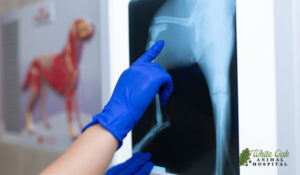 Tibial tuberosity in dogs refers to a condition where the tibial tuberosity, a bony prominence on the front of the tibia (shinbone), becomes injured or fractured. This structure is vital in connecting the patella (kneecap) to the tibia via the patellar ligament, which is essential for proper knee joint function and stability in dogs.
Tibial tuberosity in dogs refers to a condition where the tibial tuberosity, a bony prominence on the front of the tibia (shinbone), becomes injured or fractured. This structure is vital in connecting the patella (kneecap) to the tibia via the patellar ligament, which is essential for proper knee joint function and stability in dogs.
When the tibial tuberosity is compromised, dogs can experience significant pain, swelling, and difficulty in movement. This condition is especially common in young dogs, as their bones are still developing and are more susceptible to injury. The most common cause of Tibial Tuberosity in Dogs is trauma, such as a fall or an awkward jump that places undue stress on the knee joint. This can lead to an avulsion fracture, where the bone fragment is pulled away by the attached muscle or tendon.
Certain breeds and sizes of dogs, especially small or toy breeds, are at a higher risk for this condition due to their delicate bone structure. Additionally, puppies are more vulnerable to tibial tuberosity in dogs because their tibial bones have not yet fully fused. Knowing the causes and risk factors of this condition can help dog owners take preventive measures and seek early veterinary care, ensuring better outcomes for their pets.
5 Telltale Signs of Tibial Tuberosity in Dogs
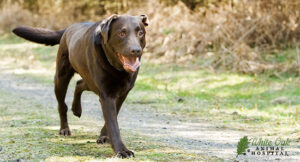 Limping or Lameness. Limping or lameness is a common sign of tibial tuberosity in dogs. This occurs when the affected leg cannot bear weight due to pain and instability. Owners may notice their dog favoring one leg or struggling to walk normally.
Limping or Lameness. Limping or lameness is a common sign of tibial tuberosity in dogs. This occurs when the affected leg cannot bear weight due to pain and instability. Owners may notice their dog favoring one leg or struggling to walk normally.- Swelling around the Knee Area. Swelling around the knee is another key indicator of tibial tuberosity in dogs. This swelling is due to inflammation caused by the injury to the tibial tuberosity. It can make the knee appear enlarged or tender to the touch.
- Difficulty Standing or Jumping. Dogs with tibial tuberosity issues may find it difficult to stand or jump. The injury affects the knee’s ability to function properly, leading to discomfort during movement. Pet owners might observe hesitation or reluctance in their dog’s activities.
- Visible Deformity in the Leg. A visible deformity in the leg can signal tibial tuberosity in dogs. This might present as an unusual angle or protrusion near the knee. Such deformities occur when the tibial tuberosity is displaced or fractured.
- Signs of Pain When Touched. Signs of pain, when the affected area is touched, are also common in tibial tuberosity in dogs. The dog may react by pulling away, whining, or showing discomfort. This pain is due to the sensitive nature of the injured tibial tuberosity.
Diagnosing Tibial Tuberosity in Dogs
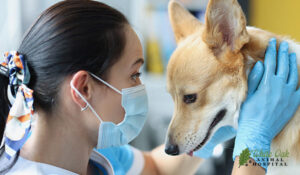 Diagnosing tibial tuberosity in dogs requires a thorough examination by a veterinarian. The process begins with a detailed physical examination, where the veterinarian will assess the dog’s gait and palpate the affected leg to identify any signs of pain, swelling, or deformity. Observing the dog’s movement and response to touch helps in determining the extent of the injury and the specific location of discomfort.
Diagnosing tibial tuberosity in dogs requires a thorough examination by a veterinarian. The process begins with a detailed physical examination, where the veterinarian will assess the dog’s gait and palpate the affected leg to identify any signs of pain, swelling, or deformity. Observing the dog’s movement and response to touch helps in determining the extent of the injury and the specific location of discomfort.
To confirm the diagnosis, veterinarians often rely on diagnostic imaging, such as X-rays. X-rays are essential in providing a clear view of the bone structure and any potential fractures or displacements in the tibial tuberosity. In some cases, both legs may be X-rayed for comparison, ensuring an accurate diagnosis. The imaging allows the veterinarian to assess the severity of the condition and to develop an appropriate treatment plan.
Early detection of this disease is crucial for effective treatment. When diagnosed promptly, there are more options available for managing the condition and preventing further complications. Delayed diagnosis can lead to increased pain and long-term damage to the joint, making recovery more challenging. Pet owners should be vigilant in noticing signs of discomfort or changes in their dog’s mobility and seek veterinary care immediately. Early intervention improves the chances of a successful recovery and enhances the dog’s overall quality of life.
Treatment Options for Tibial Tuberosity
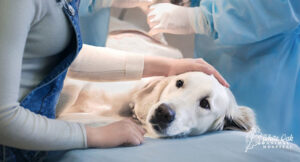 Treating tibial tuberosity in dogs involves a combination of surgical and non-surgical approaches, depending on the severity of the condition. In many cases, surgery is recommended, especially when the tibial tuberosity is significantly displaced or fractured. The surgical procedure typically involves repositioning the bone fragment and securing it with pins or wires to ensure proper healing. This approach helps restore stability to the knee joint, allowing the dog to regain normal function.
Treating tibial tuberosity in dogs involves a combination of surgical and non-surgical approaches, depending on the severity of the condition. In many cases, surgery is recommended, especially when the tibial tuberosity is significantly displaced or fractured. The surgical procedure typically involves repositioning the bone fragment and securing it with pins or wires to ensure proper healing. This approach helps restore stability to the knee joint, allowing the dog to regain normal function.
For less severe cases, non-surgical options may be considered. These can include rest, restricted activity, and the use of pain relief and anti-inflammatory medications to manage discomfort and reduce swelling. Physical therapy might also be recommended to help strengthen the muscles around the knee and improve the dog’s mobility. In some cases, a brace or cast may be used to immobilize the affected leg and promote healing without surgery.
A tailored treatment plan is essential for each dog, as the condition’s severity and the dog’s overall health will dictate the most appropriate course of action. Factors such as the dog’s age, breed, and activity level should be considered when determining the best treatment strategy.
Recovery and rehabilitation are critical components of the treatment process. Following surgery or any non-surgical intervention, a period of rest is usually required, along with controlled physical activity to aid in the recovery. Regular follow-up visits with the veterinarian are important to monitor the healing process and adjust the treatment plan as needed, ensuring the best possible outcome for the dog.
Preventing Tibial Tuberosity in Dogs
To reduce the risk of tibial tuberosity in dogs, several steps can be helpful. First, maintaining a healthy weight is crucial. Excess weight can put additional stress on your dog’s joints, increasing the risk of this condition. Ensure your dog follows a balanced diet and gets regular exercise to manage their weight effectively.
Regular veterinary check-ups are also essential. These visits allow your vet to monitor your dog’s overall health and catch any issues early. During these check-ups, your vet can assess your dog’s joints and guide any necessary lifestyle adjustments.
Additionally, avoid excessive exercise or activities that put too much strain on your dog’s legs. Gradually increase exercise intensity to help prevent joint injuries. By following these preventive measures, you can help reduce the likelihood of tibial tuberosity in dogs and promote their overall well-being.
Why Choose White Oak Animal Hospital for Tibial Tuberosity in Dogs?
White Oak Animal Hospital stands out for its specialized care in treating tibial tuberosity in dogs. With over 28 years of experience, the hospital has a deep understanding of complex conditions affecting pets. Their expertise ensures that each dog receives the highest level of care tailored to their specific needs.
One of the unique aspects of White Oak Animal Hospital is its integrative treatment options. They offer therapies not widely available elsewhere, including Traditional Chinese Veterinary Medicine (TCVM) and Telemedicine consultations. This approach combines conventional treatments with alternative therapies, providing a comprehensive plan to manage and treat tibial tuberosity in dogs effectively.
 Recognizing the signs of tibial tuberosity is crucial for early intervention. Symptoms can include limping, swelling, or pain in the knee area. If you notice any of these signs in your dog, seeking prompt veterinary care is essential to prevent further complications.
Recognizing the signs of tibial tuberosity is crucial for early intervention. Symptoms can include limping, swelling, or pain in the knee area. If you notice any of these signs in your dog, seeking prompt veterinary care is essential to prevent further complications.
At White Oak Animal Hospital, you can expect a holistic approach to your dog’s health, leveraging their extensive experience and innovative treatment options. If you suspect your dog may have tibial tuberosity or if you wish to explore integrative care options, contact White Oak Animal Hospital. Their expert team is ready to provide the compassionate and comprehensive care your pet deserves. Call today to schedule a consultation and ensure your dog receives the best possible treatment.
Frequently Asked Questions
Can Tibial Tuberosity in Dogs Heal on Its Own?
Tibial tuberosity in dogs typically does not heal independently and requires veterinary intervention. Without treatment, the condition can worsen, leading to chronic pain and long-term damage.
Is Surgery Always Required for Tibial Tuberosity in Dogs?
Surgery is often recommended for tibial tuberosity in dogs, especially in severe cases. However, mild cases may be managed with non-surgical treatments like rest and physical therapy.
How Can I Help My Dog Recover from Tibial Tuberosity Surgery?
After surgery for tibial tuberosity in dogs, ensure your dog rests and follows the vet’s recovery plan, including pain management and physical therapy. Regular check-ups are essential to monitor progress.
What Should I Expect During a TCVM Telemedicine Consultation for My Dog?
During a TCVM telemedicine consultation for tibial tuberosity in dogs, a veterinarian will assess your dog via video and recommend holistic treatments like herbal medicine and acupuncture. This approach complements conventional care.
Related Posts
-
The Top 5 Signs of Cancer in Dogs: A Countdown to Awareness
Understanding the signs of cancer in dogs is crucial for pet owners. Early recognition of…
-
5 Signs of Breast Cancer in Dogs You Shouldn't Ignore: Early Detection is Key
In the realm of canine health, one prevalent concern among pet owners is the specter…
-
How Melatonin for Dogs Promotes Relaxation
Just like people, dogs experience stress for a number of reasons. Some dogs feel nervous…
-
Benefits of Spirulina Supplements For Dogs
s Will spirulina supplements benefit your dog? Well, just like people, sometimes pets experience dips…








